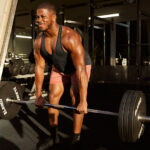You can do HIIT workouts at home without equipment. HIIT is effective for burning fat and improving fitness.
HIIT, or high-intensity interval training, is a popular and efficient workout method that can be done at home with no equipment. It involves short bursts of intense exercise followed by brief rest periods. This style of workout can help burn fat, improve cardiovascular health, and build strength.
The best part is that you don’t need any fancy equipment to get started. In this blog, we will explore various HIIT exercises that you can do at home with no equipment required. Whether you’re a beginner or a seasoned fitness enthusiast, there’s a HIIT routine that can work for you. Let’s dive in and discover the world of HIIT workouts at home with no equipment.
Introduction To Hiit
Discover the effectiveness of HIIT workouts at home with no equipment needed. Engage in bodyweight exercises like squats, lunges, and mountain climbers for a challenging and rewarding fitness routine. Achieve your fitness goals with high-intensity interval training anytime, anywhere.
High-Intensity Interval Training (HIIT) is a popular workout technique that involves alternating between intense bursts of activity and brief recovery periods. It is known for its effectiveness in burning calories and improving cardiovascular health.
Benefits Of High-intensity Interval Training
- Efficient calorie burning
- Improved cardiovascular fitness
- Time-saving workouts
- Enhanced metabolism
Hiit Fundamentals: Maximizing Workout Efficiency
HIIT maximizes workout efficiency by pushing your body to work at its maximum capacity during intense intervals, followed by short rest periods. This method optimizes calorie burn and boosts endurance in a shorter amount of time.
Getting Started With Hiit
High-Intensity Interval Training (HIIT) is a popular and effective workout method that can be done at home with no equipment. It involves short bursts of intense exercise followed by brief periods of rest or lower-intensity activity. Before diving into your HIIT routine, there are a few key steps to consider to ensure a safe and successful workout experience.
Assessing Your Fitness Level
Before starting HIIT workouts, it’s essential to assess your current fitness level. This can help you determine the intensity and duration of your HIIT sessions. Consider factors such as your overall health, any existing medical conditions, and your regular physical activity levels. By understanding your fitness baseline, you can tailor your HIIT workouts to suit your individual needs and abilities.
Creating Your Hiit Space At Home
Designating a specific area in your home for HIIT workouts can help you stay focused and motivated. Choose a space with enough room for movement and ensure it is free from any potential hazards. Additionally, consider factors such as ventilation, lighting, and flooring to create a comfortable and safe workout environment. By creating a dedicated HIIT space, you can establish a consistent workout routine and minimize distractions during your sessions.
Essential Hiit Movements
High-Intensity Interval Training (HIIT) is an effective way to boost your fitness level, burn calories, and improve your overall health. HIIT workouts consist of short bursts of intense exercise followed by brief periods of rest or lower-intensity activity. These workouts can be done at home with no equipment, making them accessible to everyone. Incorporating essential HIIT movements into your routine can help you achieve your fitness goals and maintain a healthy lifestyle.
Bodyweight Exercises For Strength And Stamina
Bodyweight exercises are an excellent way to build strength and stamina without the need for equipment. These movements engage multiple muscle groups, providing a full-body workout that can improve both muscular endurance and cardiovascular health. Some essential bodyweight exercises for HIIT include:
- Lunge: This exercise targets the lower body, particularly the glutes, quadriceps, and hamstrings, helping to improve lower body strength and stability.
- Burpee: A full-body exercise that combines a squat, plank, and jump, providing an effective way to elevate the heart rate and work multiple muscle groups simultaneously.
- Squat: A fundamental movement for lower body strength, squats engage the quadriceps, hamstrings, and glutes, promoting functional strength and mobility.
- Mountain Climbers: This dynamic exercise targets the core, shoulders, and legs, enhancing both strength and cardiovascular endurance.
- Push-ups: A classic upper body exercise that works the chest, shoulders, and triceps, promoting upper body strength and stability.
Dynamic Moves For Cardiovascular Health
Incorporating dynamic movements into your HIIT routine can enhance cardiovascular health, improve agility, and increase overall calorie burn. These exercises are designed to elevate the heart rate and keep it elevated throughout the workout. Some dynamic movements for HIIT include:
- High Knees: This exercise involves rapidly bringing the knees up towards the chest, providing a high-intensity cardiovascular workout that also engages the core and lower body.
- Bicycle Crunches: A core-focused movement that involves twisting the upper body and engaging the abdominal muscles, promoting core strength and stability while also elevating the heart rate.
- Plank: A static hold that engages the core, shoulders, and stabilizing muscles, promoting overall core strength and endurance.
- Bear Squat Push Ups: A combination of a squat and push-up, this exercise targets the lower body, chest, and arms, providing a full-body challenge that boosts cardiovascular endurance.
- Leg Lifts: An effective lower abdominal exercise that helps to strengthen and tone the core muscles while also engaging the hip flexors.
No-equipment Hiit Workouts
Elevate your fitness with no-equipment HIIT workouts at home. Engage in a range of exercises like squats, lunges, and mountain climbers for a full-body burn. No gear needed for an effective workout session anytime, anywhere.
20-minute Full-body Blast
Looking for a quick and effective way to get your heart pumping and muscles working? Look no further than this 20-minute full-body HIIT workout, designed to get your blood flowing and your body sweating without any equipment required. This routine includes exercises like lunges, burpees, squats, and mountain climbers, all designed to target multiple muscle groups and increase your heart rate for maximum calorie burn.
Hiit Routines For Beginners
If you’re new to HIIT workouts, it can be tough to know where to start. That’s why we’ve put together a series of beginner-friendly HIIT routines that require no equipment and can be done in the comfort of your own home. These routines feature low-impact exercises like high knees, lunges, squats, and bicycle crunches, all designed to help you build strength, endurance, and cardiovascular fitness without putting too much stress on your joints.
So whether you’re looking for a full-body blast or a beginner-friendly routine, these no-equipment HIIT workouts are the perfect way to get your heart pumping and your muscles working. Try incorporating them into your weekly fitness routine and see the results for yourself!
Advanced Hiit Challenges
Take your at-home HIIT workouts to the next level with advanced challenges that require no equipment. Push your limits with exercises like burpees, mountain climbers, and high knees to elevate your fitness routine. Add variety and intensity to your workouts for maximum results.
Advanced HIIT Challenges are perfect for those who are looking to take their workouts to the next level and push their limits safely. Incorporating high-intensity techniques into your HIIT workouts can be a great way to increase the intensity and effectiveness of your workout. These techniques can include things like Tabata intervals, AMRAPs (as many reps as possible), and EMOMs (every minute on the minute).
Pushing Your Limits Safely is crucial when it comes to advanced HIIT challenges. It’s important to listen to your body and not push yourself too hard too soon. Gradually increasing the intensity and duration of your workouts can help you avoid injury and ensure that you are making progress towards your fitness goals. Incorporating rest days into your routine is also important to give your body time to recover and prevent burnout.
Incorporating High-Intensity Techniques can add an extra challenge to your HIIT workouts and help you break through plateaus. Tabata intervals, for example, involve 20 seconds of work followed by 10 seconds of rest for a total of 4 minutes. This can be a great way to increase your heart rate and burn more calories in a shorter amount of time. AMRAPs, on the other hand, involve completing as many reps as possible within a set amount of time, while EMOMs involve completing a set number of reps within a minute. These techniques can be customized to your fitness level and can help you achieve your fitness goals faster.
In conclusion, advanced HIIT challenges can be a great way to take your workouts to the next level and achieve your fitness goals faster. Incorporating high-intensity techniques into your workouts can add an extra challenge and help you break through plateaus. However, it’s important to push your limits safely and listen to your body to avoid injury and burnout. With the right approach, advanced HIIT challenges can help you achieve your fitness goals and improve your overall health and wellbeing.
Hiit For Different Fitness Goals
High-Intensity Interval Training (HIIT) is a versatile workout method that can be tailored to different fitness goals. Whether you want to focus on fat loss, build muscle endurance, or achieve other fitness objectives, HIIT can be adapted to suit your needs.
Fat Loss Focus
When it comes to shedding excess fat, HIIT workouts are highly effective. The intense bursts of activity followed by short recovery periods maximize calorie burn and boost metabolism, leading to significant fat loss over time. Incorporating exercises like burpees, mountain climbers, and high knees can elevate heart rate and promote fat burning.
Building Muscle Endurance
HIIT is not just about cardio; it can also help in building muscle endurance. By incorporating bodyweight exercises such as squats, lunges, and push-ups into the high-intensity intervals, you can challenge and strengthen your muscles while improving endurance. This can lead to enhanced stamina and the ability to sustain physical activity for longer durations.
Recovery And Nutrition
Enhance your HIIT workouts at home with no equipment by focusing on recovery and nutrition. Replenish your body with a balanced combination of protein, carbohydrates, and healthy fats to support muscle repair and growth. Don’t forget to hydrate and fuel up with nutrient-dense foods to optimize your HIIT performance.
Post-hiit Recovery Strategies
After an intense HIIT workout at home with no equipment, it’s crucial to prioritize your recovery to support muscle repair and reduce the risk of injury. Here are some effective post-HIIT recovery strategies:
- Hydrate: Drink plenty of water to replenish fluids lost during the workout.
- Cool Down: Engage in light stretching or yoga to help your muscles relax.
- Rest: Ensure you get adequate sleep to allow your body to recover and rebuild.
- Massage: Consider using a foam roller to alleviate muscle soreness.
Fueling Your Body For High-intensity Workouts
Proper nutrition is essential for sustaining energy levels during high-intensity workouts. Here’s how to fuel your body effectively:
- Pre-Workout Fuel: Consume a small meal or snack containing carbohydrates and a moderate amount of protein about 1-2 hours before your HIIT session.
- Post-Workout Nutrition: Refuel with a combination of protein and carbohydrates within 30 minutes of completing your workout to aid muscle recovery.
- Healthy Hydration: Drink water and consider adding electrolyte-rich beverages to replenish minerals lost through sweat.
- Balanced Diet: Maintain a well-rounded diet with a focus on whole foods to support overall fitness and recovery.
Tracking Your Progress
Enhance your home HIIT workouts with progress tracking to monitor fitness improvements and stay motivated. No equipment needed for these effective exercises targeting strength, cardio, and endurance. Amp up your routine with lunges, burpees, squats, mountain climbers, and more for a challenging full-body workout.
Setting And Achieving Fitness Milestones
Tracking your progress in HIIT workouts at home with no equipment is essential to set and achieve fitness milestones. Regularly monitoring your performance helps you stay motivated and focused on your fitness goals.
Adapting Your Hiit Routine For Continued Improvement
To ensure continued progress, adapt your HIIT routine by increasing intensity, varying exercises, and incorporating new challenges. This adaptation prevents plateaus and keeps your workouts effective and engaging.
Frequently Asked Questions
Can You Do A Hiit Workout Without Equipment?
Yes, you can do a HIIT workout without equipment. Bodyweight exercises like squats, lunges, and push-ups are effective.
Is 20 Minutes Of Hiit Per Day Enough?
Yes, 20 minutes of HIIT per day is enough for an effective workout routine. HIIT offers intense exercise in a short time, benefiting overall fitness and health.
Is A 10 Minute Hiit Workout A Day Enough?
Yes, a 10-minute HIIT workout can be effective for improving fitness and burning calories. Consistency is key.
Is 30 Minutes Of Hiit A Day Enough To Lose Weight?
Yes, 30 minutes of HIIT a day can help with weight loss by burning calories efficiently. HIIT boosts metabolism and promotes fat loss.
Conclusion
HIIT workouts at home with no equipment offer a convenient and effective way to stay fit. With a variety of exercises like squats, lunges, and planks, you can achieve your fitness goals easily. Embrace the simplicity and effectiveness of at-home HIIT workouts for a healthier lifestyle.



